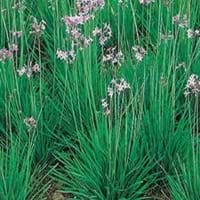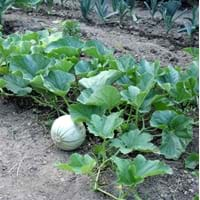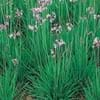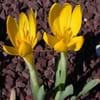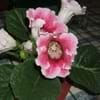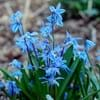Type
Bulb or Corm or Tuber
Fruit
Origin
South Africa
Hybrid origin, Africa
Types
Not Available
Not Available
Number of Varieties
Not Available
Habitat
Tropical regions, Well Drained, Wet forest
along watercourse, Banks, Barren waste areas
USDA Hardiness Zone
7-11
Not Available
Sunset Zone
21,22
2a, 2b, 3a, 3b, 4, 5, 6, 7, 8, 9, 10, 11, 12, 13, 14, 15, 16, 17, 18, 19, 20, 21, 22, 23, 24
Habit
Clump-Forming
Prostrate/Trailing
Flower Color
White, Light Pink, Lavender
Yellow
Flower Color Modifier
Bicolor
Bicolor
Fruit Color
Yellow green
Green, Yellow green
Leaf Color in Spring
Blue Green, Gray Green
Green
Leaf Color in Summer
Light Green
Green
Leaf Color in Fall
Several shades of Green
Green, Yellow green
Leaf Color in Winter
Light Green
Light Green
Leaf Shape
Long Narrow
Heart-shaped
Plant Season
Summer
Summer, Fall
Sunlight
Full Sun
Full Sun
Growth Rate
Medium
Very Fast
Type of Soil
Loamy, Well drained
Loam
The pH of Soil
Neutral
Neutral
Soil Drainage
Well drained
Well drained
Bloom Time
Early Summer, Summer
Early Summer, Summer, Indeterminate
Tolerances
Dry soil, Shade areas
Drought
Where to Plant?
Ground
Ground
How to Plant?
Budding, From bulbs
Seedlings
Plant Maintenance
Low
Medium
Watering Requirements
Keep ground moist, Never Over-water
Reduce watering once fruit are growing, Water in the early morning hours
In Summer
Moderate
Lots of watering
In Spring
Average Water
Moderate
In Winter
Less Watering
Average Water
Soil Type
Loam, Sand
Loam
Soil Drainage Capacity
Well drained
Well drained
Sun Exposure
Full Sun
Full Sun
Pruning
Cut out old flower stalks, Prune ocassionally
Remove damaged leaves, Remove dead branches, Remove dead leaves
Fertilizers
fertilize in fall, Nitrogen
All-Purpose Liquid Fertilizer
Pests and Diseases
Bacterial leaf spot, Nematodes, Purple Blotch, Red blotch, Seedcorn maggot
Aphids, Cucumber beetles, Fusarium wilt
Plant Tolerance
Dry soil, Shade areas
Drought
Flower Petal Number
Single
Single
Fragrant Bark/Stem
Yes
No
Foliage Texture
Medium
Coarse
Foliage Sheen
Matte
Matte
Attracts
Bugs, Flying insects, Insects
Ants
Allergy
Dermatitis, Pain and fatigue
Dizziness, Mouth itching, Nausea
Aesthetic Uses
Showy Purposes, Used in parkland
Not Used For Aesthetic Purpose
Beauty Benefits
Acne, For treating wrinkles, Making cosmetics, Removes pimples
Good for skin, Hair Conditioner, Stops hair loss
Environmental Uses
Indoor Air Purification, Insect Repellent
Air purification
Medicinal Uses
Acne, Aging, Antidepressant, epilepsy, Nerve pain, Obesity, Vomiting
Antitussive, Digestive, Diuretic, Emetic, Febrifuge, Stomachic
Part of Plant Used
Bulbs
Fruits, Seeds
Other Uses
Animal Feed, Can be made into a herbal tea, Oil is used in mosquito repellents, Use in Chinese herbology, Used as Ornamental plant, Used for its medicinal properties
For making oil for cosmetics
Used As Indoor Plant
No
No
Used As Outdoor Plant
Yes
Yes
Garden Design
Edible, Herb / Vegetable
Edible, Fruit / Fruit Tree, Herb / Vegetable, Vine
Botanical Name
TULBAGHIA violacea
CUCUMIS melo 'Burpees Early Hybrid'
Common Name
Society Garlic
Crenshaw Melon
In German
Knoblauch
Zuckermelone
In Spanish
Ajo
Crenshaw Melon
In Greek
σκόρδο
Crenshaw Melon
In Portuguese
alho
Crenshaw Melon
In Polish
czosnek
Crenshaw Melon
In Latin
allium
Crenshaw Melon
Phylum
Magnoliophyta
Magnoliophyta
Class
Liliopsida
Magnoliopsida
Order
Liliales
Cucurbitales
Family
Liliaceae
Cucurbitaceae
Clade
Monocotyledonous
Angiosperms, Eudicots, Rosids
Tribe
Not Available
Not Available
Subfamily
Lilioideae
Not Available
Number of Species
Not Available
Importance of Society Garlic and Crenshaw Melon
Want to have the most appropriate plant for your garden? You might want to know the importance of Society Garlic and Crenshaw Melon. Basically, these two plants vary in many aspects. Compare Society Garlic and Crenshaw Melon as they differ in many characteristics such as their life, care, benefits, facts, etc. Every gardener must at least have the slightest clue about the plants he wants to plant in his garden. Compare their benefits, which differ in many ways like facts and uses. The medicinal use of Society Garlic is Acne, Aging, Antidepressant, epilepsy, Nerve pain, Obesity and Vomiting whereas of Crenshaw Melon is Antitussive, Digestive, Diuretic, Emetic, Febrifuge and Stomachic. Society Garlic has beauty benefits as follows: Acne, For treating wrinkles, Making cosmetics and Removes pimples while Crenshaw Melon has beauty benefits as follows: Acne, For treating wrinkles, Making cosmetics and Removes pimples.
Compare Facts of Society Garlic vs Crenshaw Melon
How to choose the best garden plant for your garden depending upon its facts? Here garden plant comparison will help you to solve this query. Compare the facts of Society Garlic vs Crenshaw Melon and know which one to choose. As garden plants have benefits and other uses, allergy is also a major drawback of plants for some people. Allergic reactions of Society Garlic are Dermatitis and Pain and fatigue whereas of Crenshaw Melon have Dizziness, Mouth itching and Nausea respectively. Having a fruit bearing plant in your garden can be a plus point of your garden. Society Garlic has no showy fruits and Crenshaw Melon has showy fruits. Also Society Garlic is not flowering and Crenshaw Melon is not flowering . You can compare Society Garlic and Crenshaw Melon facts and facts of other plants too.
